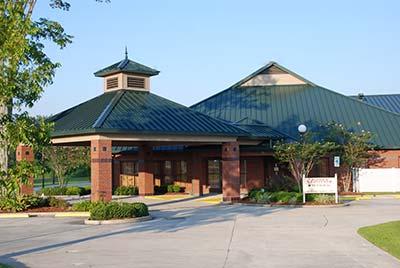Pain Blog: Ulnar Nerve Entrapment

Ulnar nerve entrapment typically develops slowly, causing symptoms that you may be tempted to ignore at first. But the longer the damaged nerve goes untreated, the more nerve pain and tingling you experience. At the same time, your risk of developing muscle problems increases.
When you have persistent symptoms, our team at the Headache & Pain Center offers several treatments that can ease your symptoms and give the nerve time to heal so you regain function. Read on to learn about the signs and treatments for ulnar nerve entrapment.
Pain Blog Articles
Herniated Disk or Muscle Strain?
Does Arthritis Cause Deformity?
Is Your Lifestyle Causing Back Pain?
Why You Shouldn't Ignore Neck Pain
What Could Be Causing Spine Pain?
Remedy & Prevent Sciatica Pain
Can I Get a Spinal Cord Stimulator?
About ulnar nerve entrapment
The ulnar nerve is one of three major nerves that support feeling and muscle movement in your arms and hands. The nerve leaves your spinal cord at the base of your neck, travels past your shoulder, down your arm, and into your hand and little finger.
Ulnar nerve entrapment occurs when the nerve becomes compressed as it passes through the bones in your elbow or wrist.
Cubital tunnel syndrome
As the nerve passes your elbow, it goes through a narrow space called the cubital tunnel. If the nerve is pinched here, the condition is called cubital tunnel syndrome.
Cubital tunnel syndrome is the most common type of ulnar nerve entrapment. The problem develops when you:
- Keep your elbow bent for a long time
- Repeatedly bend your elbow
- Lean against your elbow for a long time
- Have fluid build up in the elbow joint
- Have an elbow bone rub against the nerve
- Suffer an elbow fracture or injury
The electric-shock pain that occurs when you take a direct hit to the ulnar nerve is more commonly known as hitting your funny bone.
Ulnar tunnel syndrome (bicycler’s neuropathy or handlebar palsy)
Ulnar tunnel syndrome occurs when the nerve is injured at the wrist as it goes through another narrow passage that has two names, Guyon’s canal and the ulnar tunnel.
This condition may develop due to overuse, inflammation, trauma, or a ganglion cyst. But one of the top causes is excessive or prolonged pressure on the hands and wrists while cycling.
Signs of ulnar nerve entrapment
The ulnar nerve carries sensory and motor signals. As a result, your symptoms can involve sensations, muscle problems, or both.
The earliest signs of ulnar nerve entrapment are pain, tingling, and numbness in your little and ring fingers or your forearm. You may develop a weak grip in the affected hand or lose coordination in the two fingers.
Without treatment, the ongoing nerve damage leads to muscle weakness in your hand or forearm. In severe cases, certain muscles waste away, making it hard to move your wrist and hand.
The loss of sensation and muscle control caused by ulnar nerve entrapment in your wrist can make the muscles in your hand tighten. As a result, you develop a claw-like deformity.
When the nerve is pinched in your elbow, it’s common to have pain or tenderness in the inner part of your elbow. Additionally, your symptoms feel worse when you bend your elbow. For example, you may have worse symptoms while driving, holding a phone, or during the night if you sleep with your elbow bent.
Ulnar nerve entrapment treatments
Treatment for ulnar neuropathy begins with conservative care. Your initial treatment plan may include one or more of the following:
- Nonsteroidal anti-inflammatory drugs (NSAIDs)
- Tricyclic antidepressants (to relieve pain)
- Vitamin B6 supplements
- Wrist immobilization
- Elbow brace
- Night splinting
- Nerve-gliding exercises
- Physical therapy
- Therapeutic ultrasound
- Avoiding activities that irritate the nerve
When your symptoms persist despite nonsurgical therapies, we offer advanced interventional treatments that effectively relieve pain and tingling. For example, we may recommend radiofrequency ablation.
Radiofrequency ablation is a minimally invasive procedure using a hollow needle to deliver radiofrequency energy to the nerve. The energy creates a wound that stops pain signals from traveling to your brain. As a result, you don’t feel the pain.
You may need surgery to relieve pressure on the nerve if you develop muscle weakness or wasting. The surgeon may increase the size of the tunnel or move the nerve. If the elbow bone rubs against the nerve, they may remove a small part of the bone.
If you need relief from ulnar nerve entrapment, call us at one of our Headache & Pain Center locations or book an appointment online today. We have offices in New Iberia and Gray, Louisiana.



